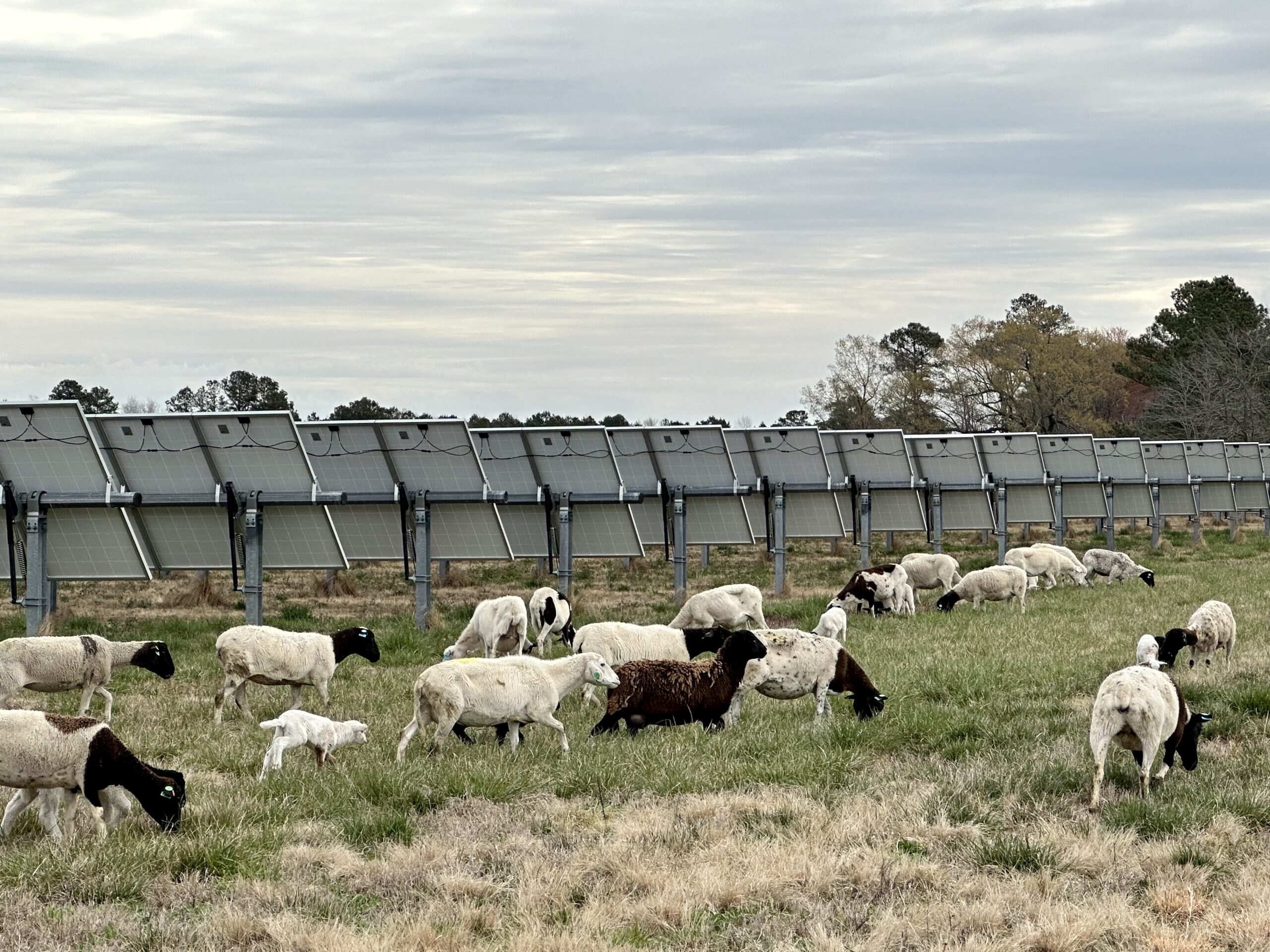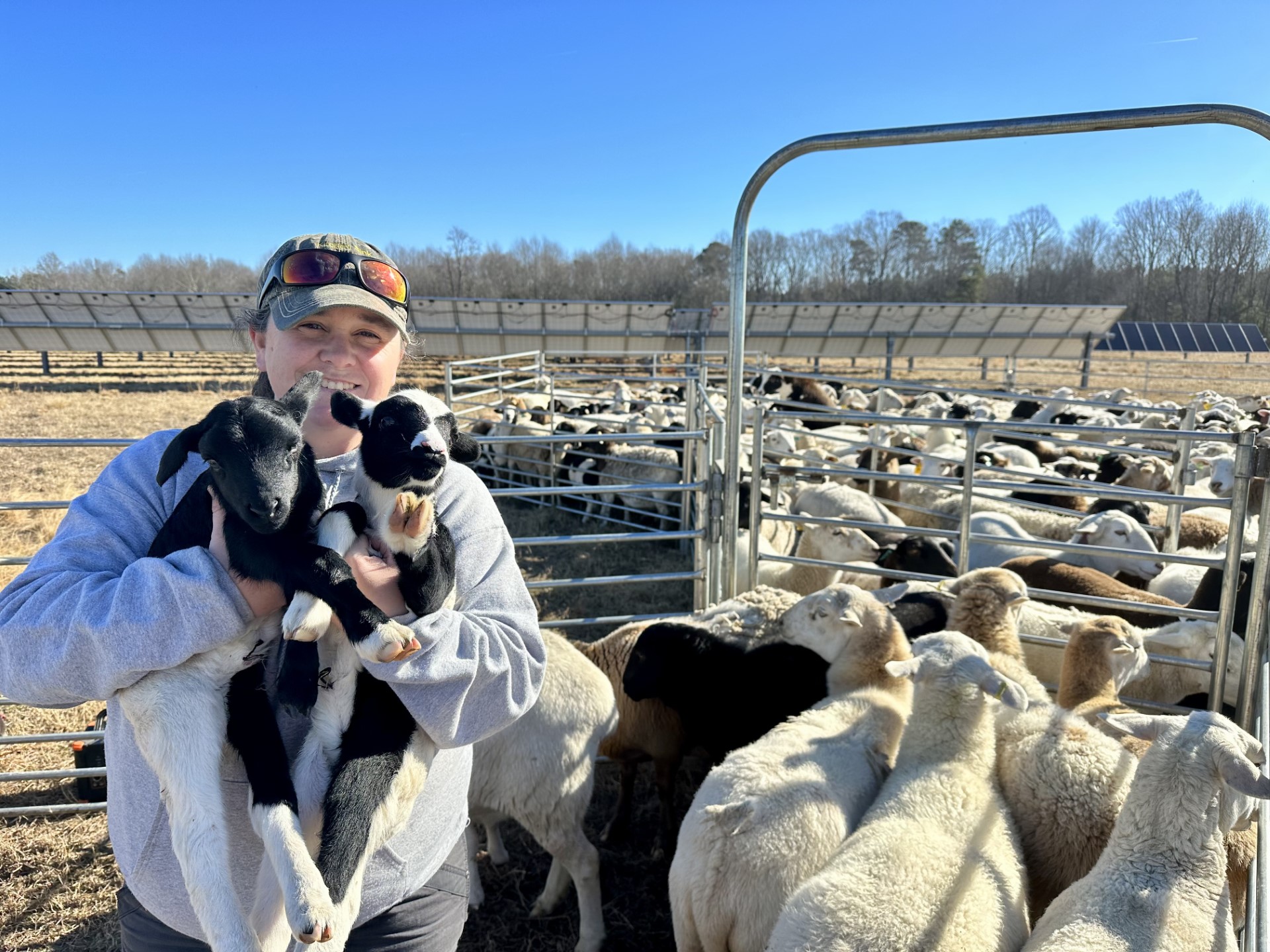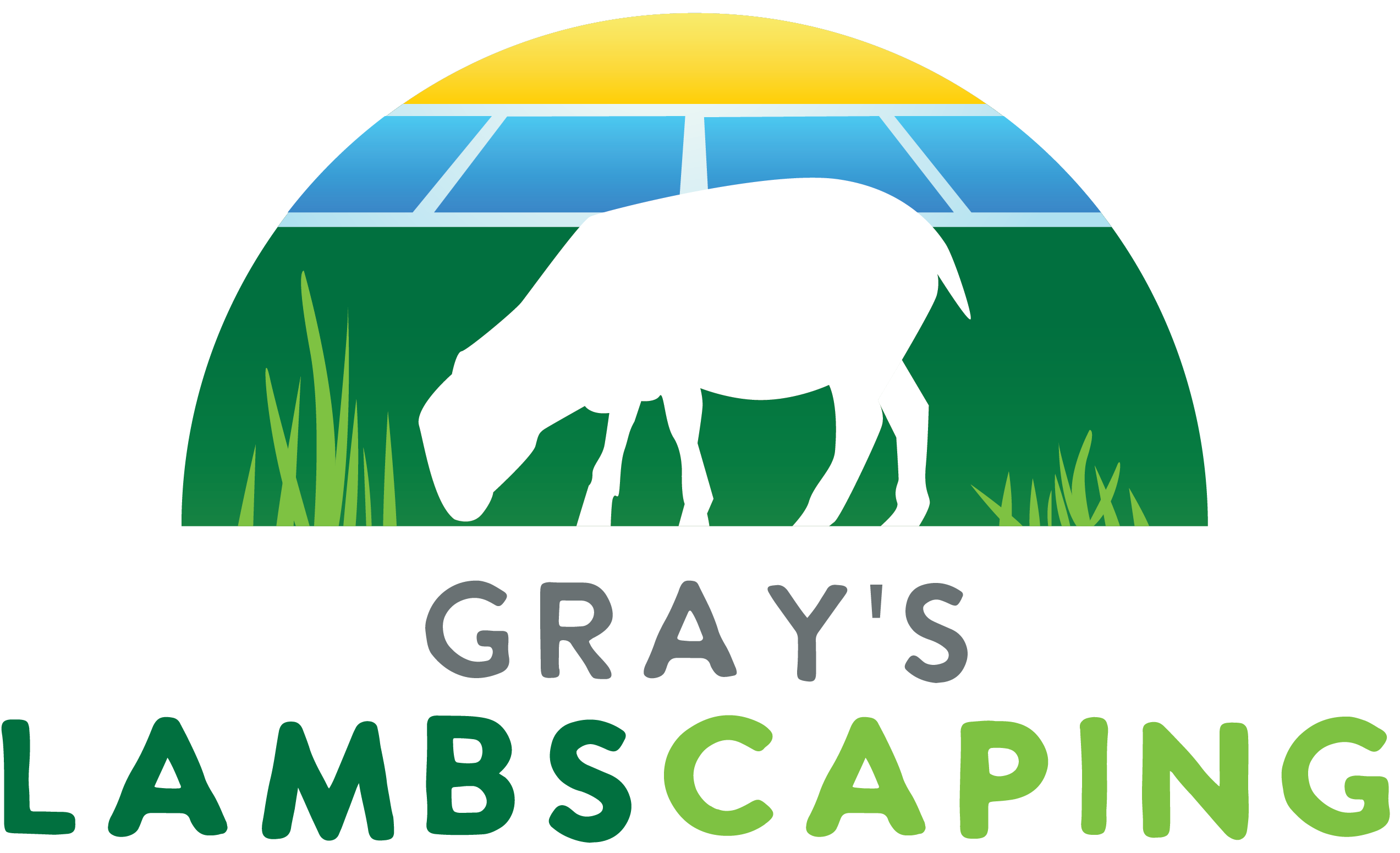What Is Solar Grazing?
By: Jess Gray · Jan. 26, 2024 · 6 min
Integrating renewable energy with agriculture represents a forward-thinking approach to land management, sustainability, and energy production. At the heart of this integration lies an innovative practice known as solar grazing. So, what is solar grazing? At Gray’s LAMBscaping, we’ve been trusted to manage thousands of acres by some of the nation’s largest, Fortune 500 energy companies, including Dominion Energy, Urban Grid Solar, Vesper Energy, X-ELIO, and EOR. Here’s a breakdown of what we do, and what we’ve learned over the years.
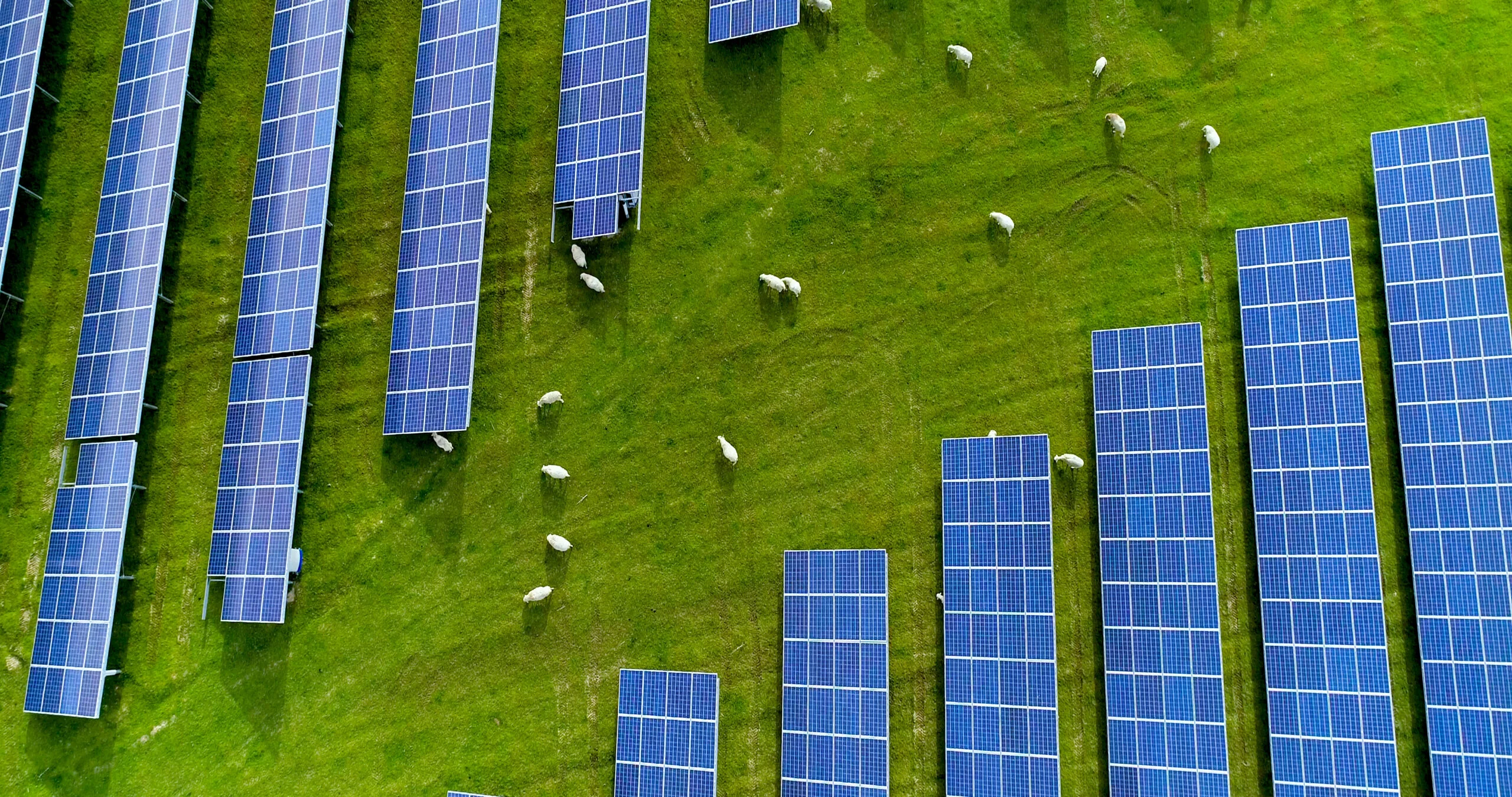
Solar Grazing
What is Solar Grazing?
Solar grazing uses livestock, mainly sheep, to manage vegetation and ground cover on solar farms. This method provides a natural way to maintain the land around solar panels and enhances the dual use of land for both energy production and agriculture.
Vegetation Management Is Key to Successful Solar Farming
Unchecked vegetation can shade solar panels, reducing their efficiency and energy output. Furthermore, tall grasses and brush can harbor rodents and other wildlife that may damage cables and electrical components. Beyond operational efficiency, vegetation control plays a vital role in fire prevention, access for maintenance, and overall farm aesthetics. The method chosen for vegetation management can significantly impact a solar farm’s environmental footprint, operational costs, and community relations.
Why Solar Grazing Is A Beneficial and Sustainable Practice
Solar grazing provides a dual-purpose solution: it keeps vegetation at a manageable height while supporting local agriculture through grazing. Sheep are particularly well-suited for this task as they prefer grass and broadleaf weeds, are less likely to damage solar panels or infrastructure than larger livestock, and can easily navigate the areas between and under panels. This method reduces the need for mechanical vegetation control and promotes biodiversity and soil health through natural grazing patterns.
We can’t overstate the relevance of solar grazing in today’s energy and agricultural landscapes. As the demand for renewable energy sources grows, so does the need for sustainable land management practices that do not compromise agrarian productivity. Solar grazing solves this challenge by allowing solar farms to coexist harmoniously with pastoral farming, offering numerous benefits, including reduced carbon footprints, enhanced soil health, and increased biodiversity on solar farms.
The benefits of solar grazing for energy production are multifaceted. Firstly, it eliminates the need for fossil fuel-powered mowing and the application of herbicides, both of which can have negative environmental impacts. This helps reduce the carbon footprint of solar farms and supports biodiversity by preserving various plants and animals that thrive in well-managed grasslands. The presence of sheep helps to keep the grass at an optimal height, ensuring the solar panels operate at maximum efficiency by minimizing shading.
From an agricultural standpoint, solar grazing enhances efficiency by providing farmers with additional grazing land, which can be particularly valuable in areas where agricultural land is scarce or expensive. This practice allows for more sustainable livestock and land management, as rotational grazing can improve soil health, promote grass growth, and reduce erosion. Furthermore, the income generated from leasing land for solar installations, managing flocks, or selling animals for production can provide a steady revenue stream for farmers, supporting the economic viability of their operations.
How It Works
The operational setup of solar grazing begins with carefully planning solar panel arrays to accommodate the grazing activities of sheep. Solar farms are designed with adequate spacing between panels and secure fencing to protect the sheep and the infrastructure. We strategically place clean water sources to meet our sheep’s needs without interfering with the solar panels’ functionality. We don’t install shelters or shade – the solar panels take care of that!
Sheep are introduced to the solar farm and graze on the grass and weeds that grow beneath and around the panels. This grazing helps to control vegetation height and density, preventing shading that could reduce the panels’ efficiency. The setup often includes rotational grazing practices, where sheep are moved between different sections of the solar farm to ensure even grazing and allow vegetation in previously grazed areas to recover.
The role of solar panels in this context extends beyond capturing sunlight for electricity generation. These installations create a microenvironment that can benefit from the natural vegetation management provided by grazing animals. The panels offer shade, which can reduce the evaporation of moisture from the soil, potentially leading to more lush grazing areas beneath them. Conversely, the grazing activity helps to prevent the overgrowth of vegetation that could otherwise shade the panels and reduce their efficiency. Unlike large mowers, sheep can safely navigate around panels without kicking up dust, debris, and rocks that negatively impact solar panel production. This fresh approach leverages the natural behaviors of sheep to maintain the land, ensuring both efficient energy generation and sustainable agricultural practices.
Why Do We Use Sheep?
Sheep are often selected for compatibility with the solar grazing model, considering their gentle grazing habits, ability to navigate the solar infrastructure, and minimal risk of damaging the panels or cables. Solar graziers work closely with solar farm operators to coordinate the movement of sheep across the solar arrays, ensuring that grazing is managed to maximize vegetation control while minimizing any potential impact on the solar equipment.
Contributions to Biodiversity
One of the key environmental benefits of solar grazing is its contribution to biodiversity. When combined with grazing, solar farms create habitats supporting various plant and animal species. The presence of sheep encourages the growth of a diverse range of grasses and forbs by selectively grazing certain plants, allowing less dominant species to flourish. This diversity in plant life attracts and sustains a wide array of insects, birds, and other wildlife, enhancing the ecological value of solar farmlands. Moreover, the variation in vegetation creates habitats that can support a broader range of species, contributing to overall biodiversity.
Soil Health Enhancements
Solar grazing plays a significant role in enhancing soil health. The activity of sheep on the land helps to naturally aerate the soil, promoting better water infiltration and reducing runoff. Their grazing maintains grass at a healthy height, which prevents soil erosion and encourages the growth of root systems that stabilize the soil. Furthermore, the manure from sheep acts as a natural fertilizer, enriching the soil with organic matter and nutrients, stimulating microbial activity, and enhancing soil fertility. This natural cycle of grazing and fertilization supports the health of the soil ecosystem, making it more resilient and productive.
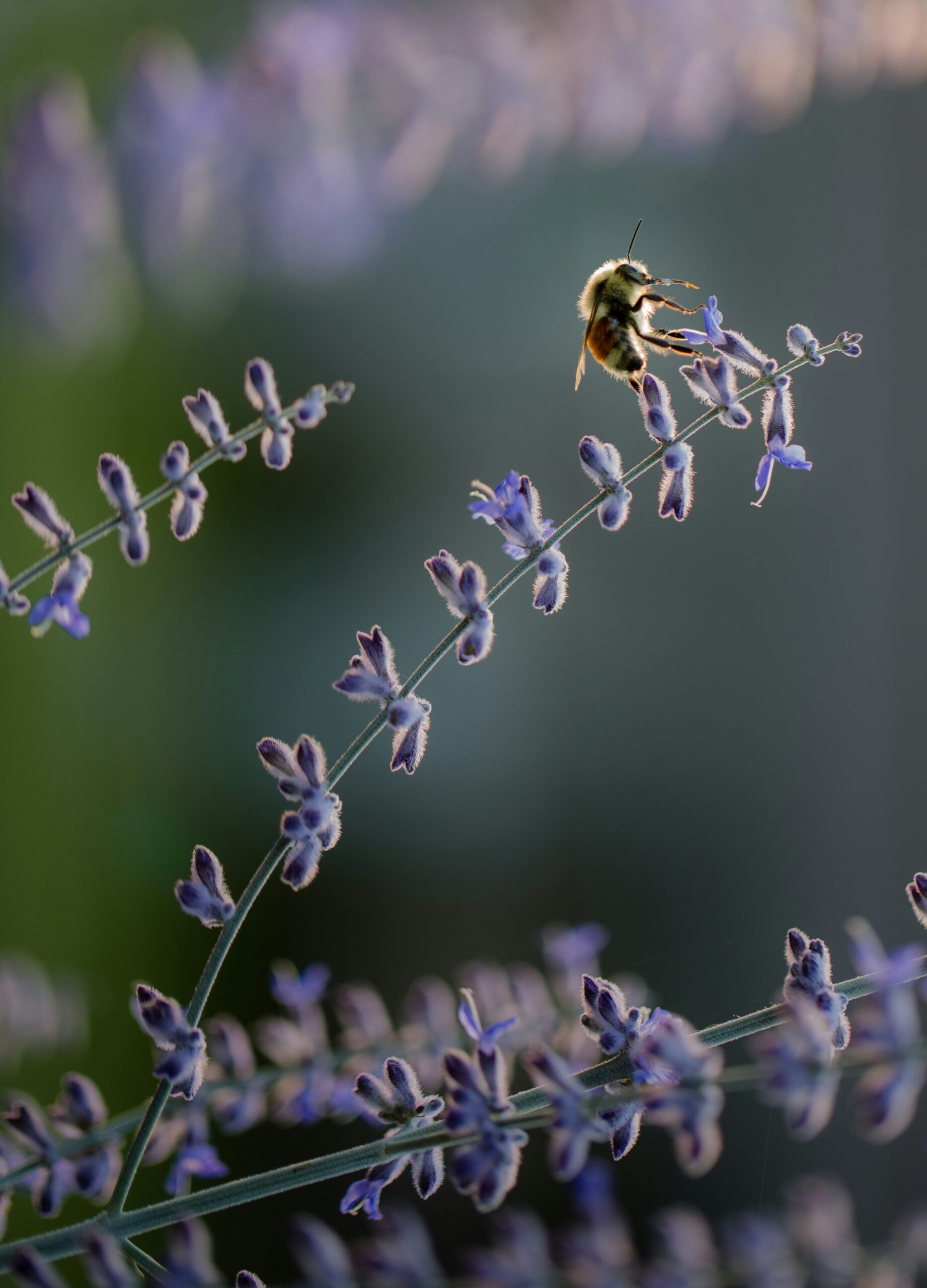
Sheep Drive Biodiversity
Solar Grazing Offers A More Sustainable Option
Solar grazing significantly reduces the carbon footprint associated with maintaining solar farm vegetation. Traditional vegetation management methods, such as mechanical mowing and the application of chemical herbicides, are energy-intensive and contribute to greenhouse gas emissions. By substituting these methods with sheep grazing, solar farms can maintain their land in a more eco-friendly manner. This practice reduces reliance on fossil fuels and minimizes the release of carbon dioxide and other pollutants, aligning with the renewable energy sector’s goal of reducing environmental impact. Over time, solar farms that use sheep require less mowing services, which saves money and labor in the long run. By fostering a more natural ecosystem balance, solar grazing minimizes the ecological footprint of solar farms, promoting a cleaner and more sustainable environment.
About Jess
Jess Gray is the CEO of Gray’s LAMBscaping, LLC, overseeing the company’s financial management, policy development, logistics, and reporting. As a 2023 Nuffield International Agricultural Scholar, Gray has represented her company in over half a dozen countries, focusing her research on integrating solar energy with livestock grazing.
